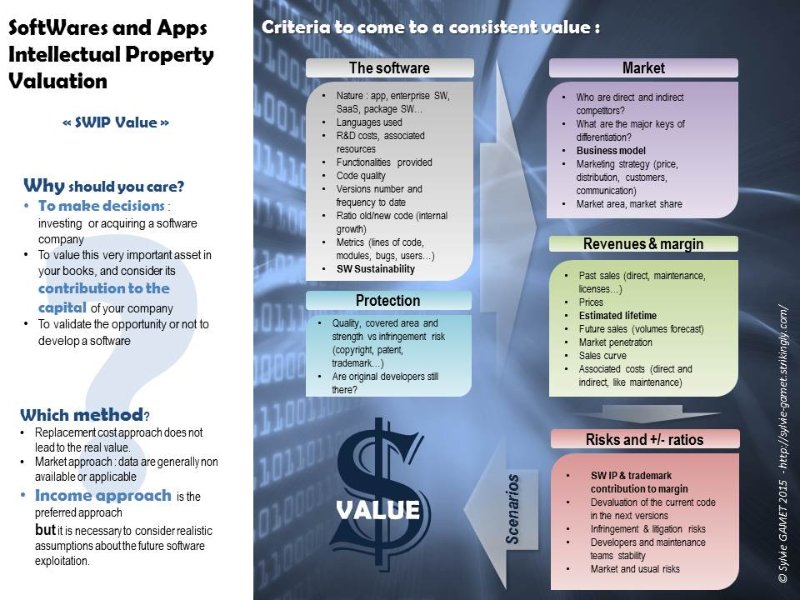Software, apps, or more generally what we call digital products, are intangible assets. They can be:
- estimated and they can be a contribution to the company’s capital. Most of the time this is done at the company’s creation or if you’re planning a potential entry of financial investors and want to be prepared for the purpose of negotiations.
- Estimated as intangible assets during assets transfer from a company to another, in order to integrate them in their accounting books.
- They are subject to constant evolution and maintenance,
- Counterfeits are hard to detect,
- their legal protection can be complex,
- their tax treatment is also specific
- Nature of the developments: application, industrial program, SaaS, off-the-shelf software …
- The programming languages used, the architecture
- Development costs and associated resources
- The proposed features
- Coding quality
- The number and frequency of versions edited to date
- The old/new code ratio
- Quantitative indicators: number of lines of code, modules, bugs, users, etc.
- The potential durability of the software
- Nature of Ip rights (copyright, patent, trademark …), quality, seniority, geographical area covered, strength against the risk of counterfeiting, and copy
- Presence of the original developers?
- Who are the companies and products directly or indirectly competing?
- What are the main axes of differentiation?
- What is the business model?
- Marketing strategy (pricing policy, distribution, market segmentation, communication)
- Market Share and Market Extent
- Past sales (direct, maintenance, licensing agreements …)
- Price
- Estimated lifetime
- An estimate of future sales (volumes)
- Speed and mode of penetration of the market
- Sales curve
- Associated costs (direct and indirect, such as maintenance)
- contribution of the software IP rights to the realization of the operational margin
- Devaluation of existing code in future versions
- Risks of copying, counterfeiting, litigation
- The loyalty of the team of developers, hotline, maintenance
- Usual risks related to the operations


